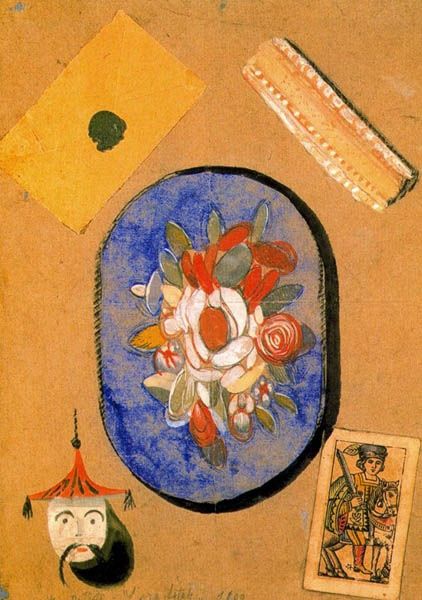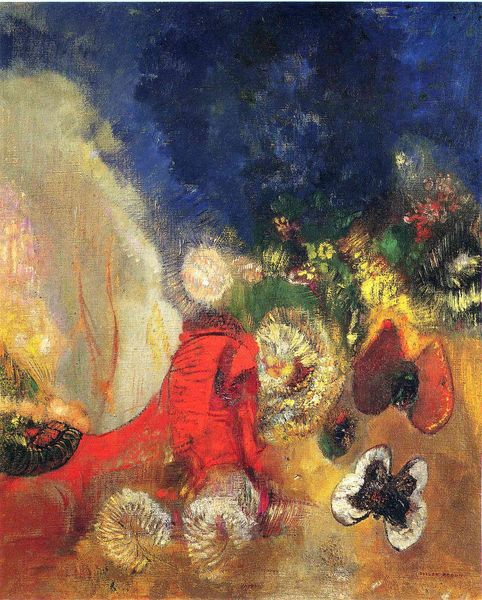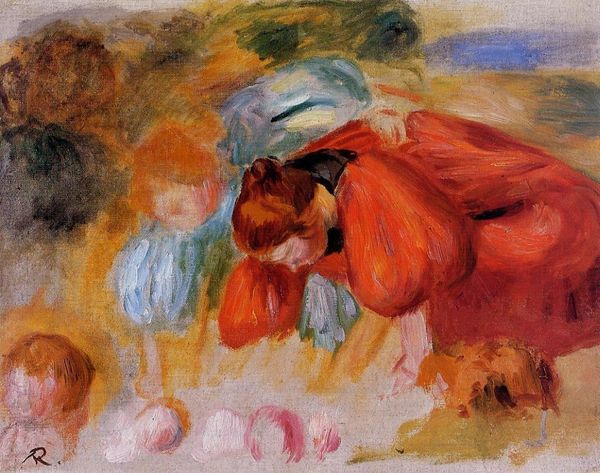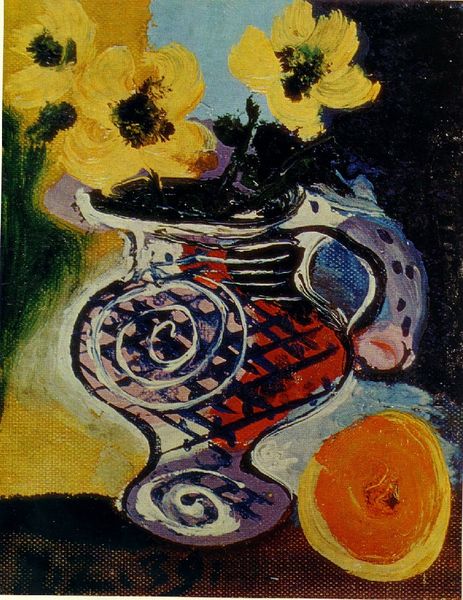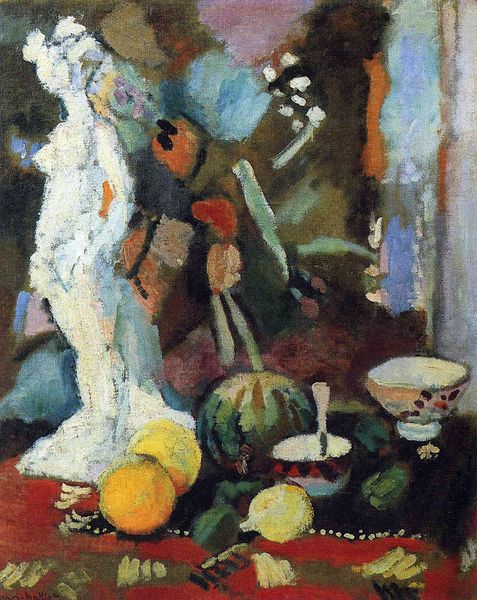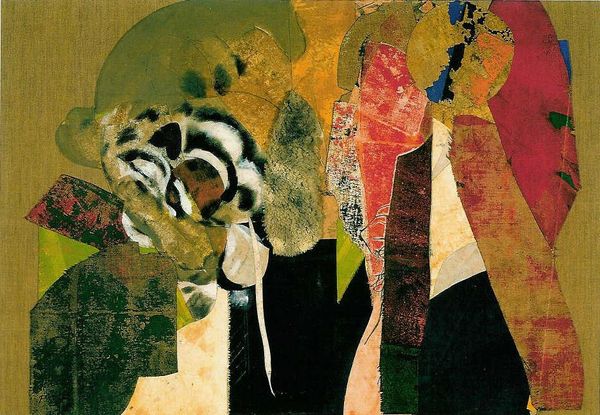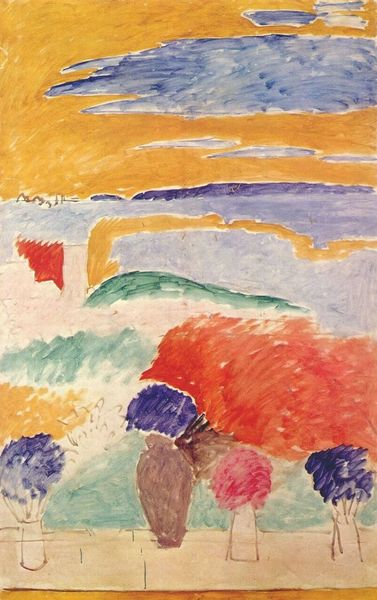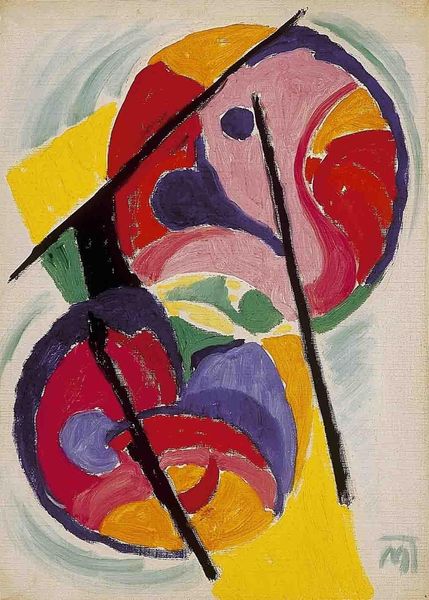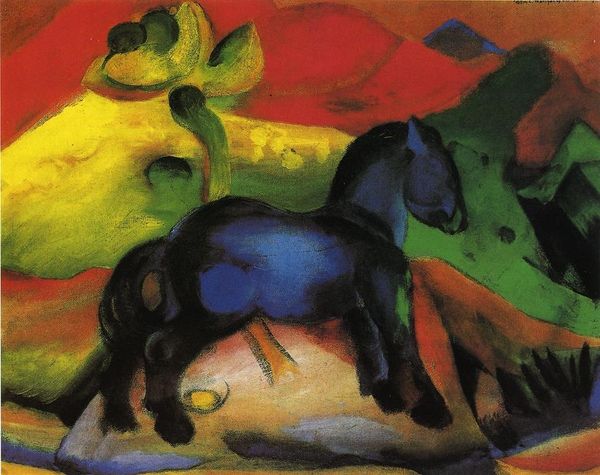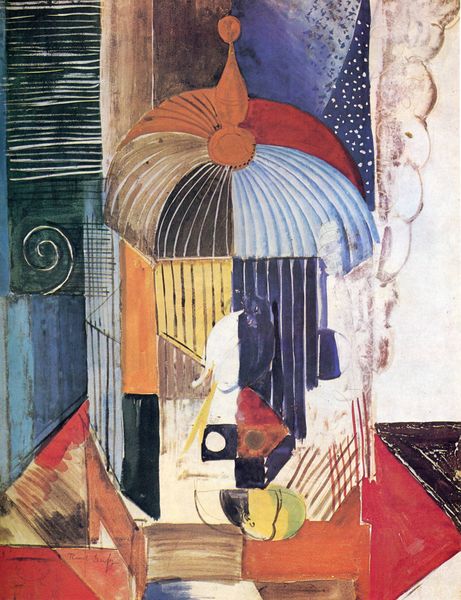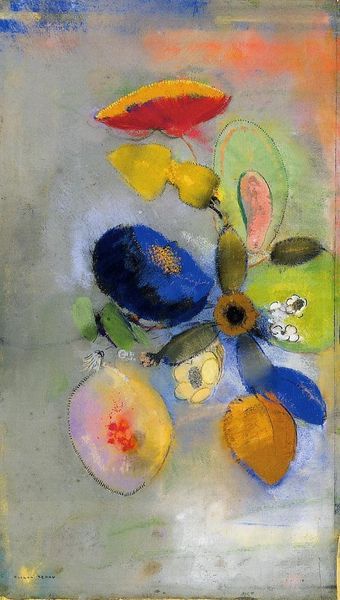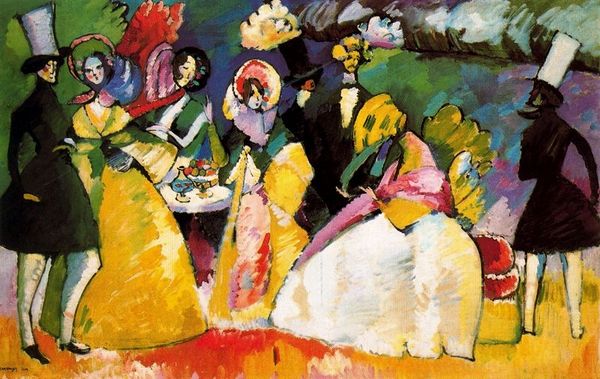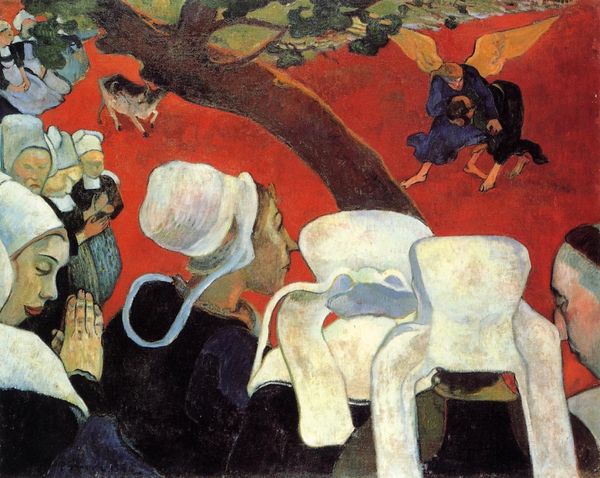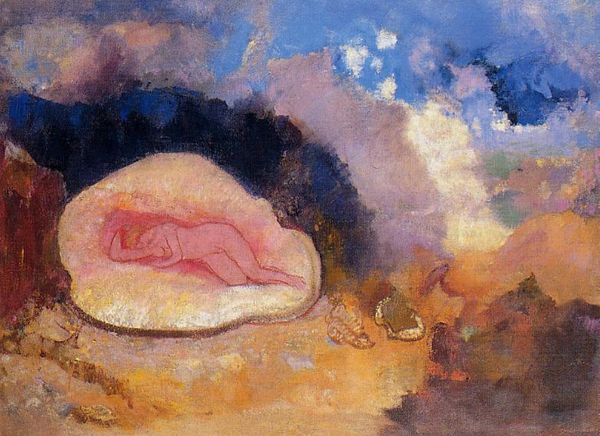
Copyright: Public domain
Curator: Well, this feels like a dream I once had after eating too much cheese! Editor: It's quite something, isn't it? We’re looking at Odilon Redon's "Nude, Begonia and Heads," created around 1912. An oil painting currently held in a private collection. What do you make of all these figures floating in the canvas? Curator: It’s strange and ethereal. The colors, though soft, are oddly jarring. Is that a nude figure crouched there? Next to a massive flower? It feels… uncomfortable, yet captivating. I can’t look away from that giant flower! Editor: Precisely! The begonia, massive and almost surreal, becomes a potent symbol. Flowers in art often represent ephemeral beauty, fleeting joy. Given its size and the somber tones surrounding it, could Redon be suggesting something about the transient nature of life, seen through a lens of melancholy? Curator: It's not your typical still life. I get this feeling he is not just representing pretty flowers and bodies but inner states. A weird mirror into emotions that are hard to name or look at. It makes you question your assumptions. Editor: Absolutely. And look at those disembodied heads—they’re like specters or lingering thoughts. Notice how they lack definition; they're almost fading away. Could this be Redon's way of depicting memories, half-formed ideas, or perhaps even anxieties? They are visual metaphors. Curator: Perhaps, yes. Memories haunting the central figures… especially the nude. She seems so vulnerable, juxtaposed with such boldness of the giant bloom and staring disembodied heads. Maybe that is how it feels when all your unacknowledged or forgotten thoughts resurface unexpectedly? I love how he plays with visibility and invisibility. It dances right at the edge. Editor: Redon's Symbolist leanings always encourage us to dig deeper than the surface. He offers a realm of suggestion, where visual elements carry cultural and emotional weight. Curator: You've given me a lot to consider… the more I look, the more the painting opens up, which makes this unsettling fever dream somehow... reassuring? Editor: That’s the power of Symbolism, I think. It invites you to participate in constructing meaning and finding yourself reflected within.
Comments
No comments
Be the first to comment and join the conversation on the ultimate creative platform.
